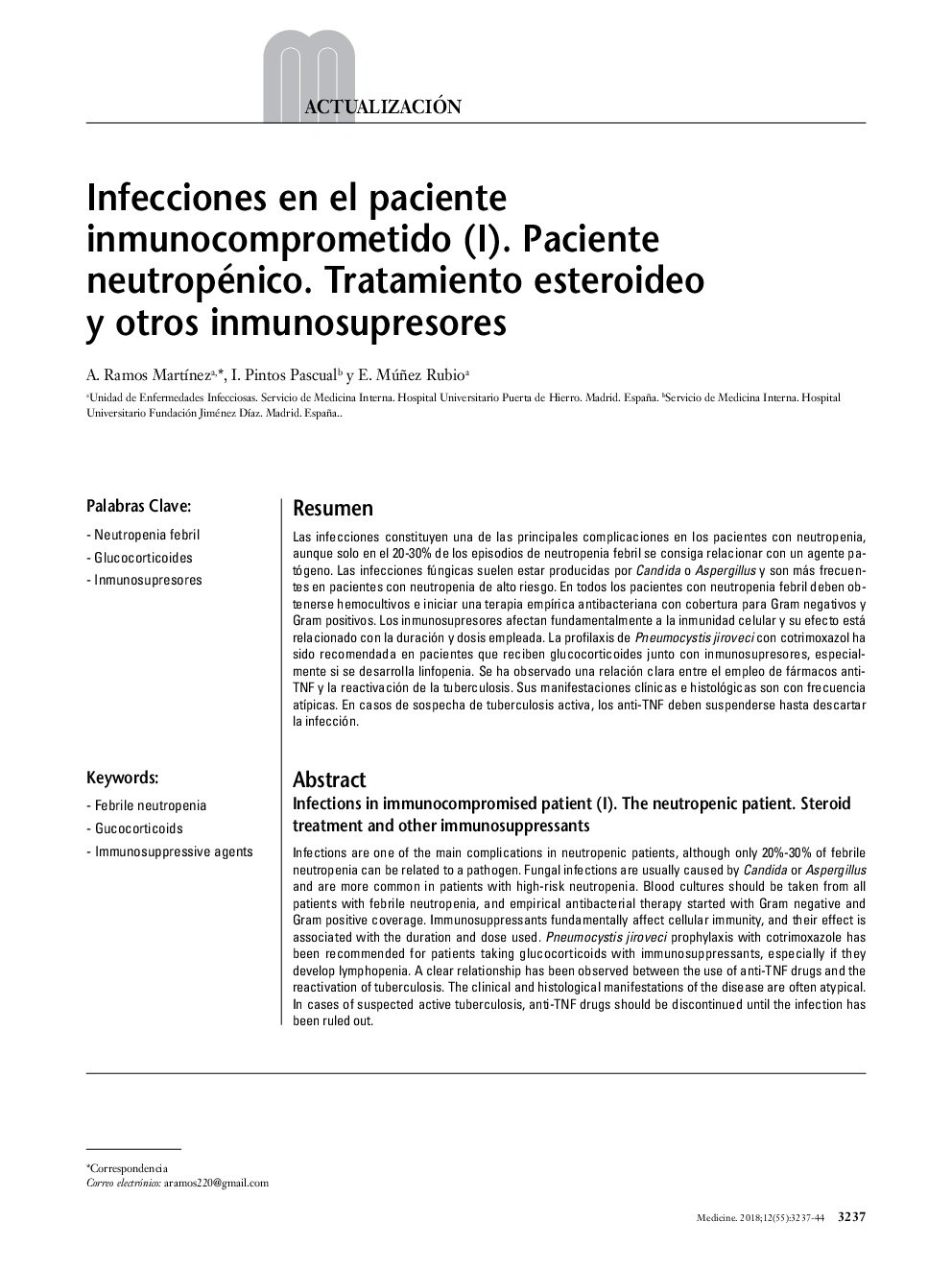| Article ID | Journal | Published Year | Pages | File Type |
|---|---|---|---|---|
| 8764251 | Medicine - Programa de Formación Médica Continuada Acreditado | 2018 | 8 Pages |
Abstract
Infections are one of the main complications in neutropenic patients, although only 20%-30% of febrile neutropenia can be related to a pathogen. Fungal infections are usually caused by Candida or Aspergillus and are more common in patients with high-risk neutropenia. Blood cultures should be taken from all patients with febrile neutropenia, and empirical antibacterial therapy started with Gram negative and Gram positive coverage. Immunosuppressants fundamentally affect cellular immunity, and their effect is associated with the duration and dose used. Pneumocystis jiroveci prophylaxis with cotrimoxazole has been recommended for patients taking glucocorticoids with immunosuppressants, especially if they develop lymphopenia. A clear relationship has been observed between the use of anti-TNF drugs and the reactivation of tuberculosis. The clinical and histological manifestations of the disease are often atypical. In cases of suspected active tuberculosis, anti-TNF drugs should be discontinued until the infection has been ruled out.
Keywords
Related Topics
Health Sciences
Medicine and Dentistry
Medicine and Dentistry (General)
Authors
A. Ramos MartÃnez, I. Pintos Pascual, E. Múñez Rubio,
